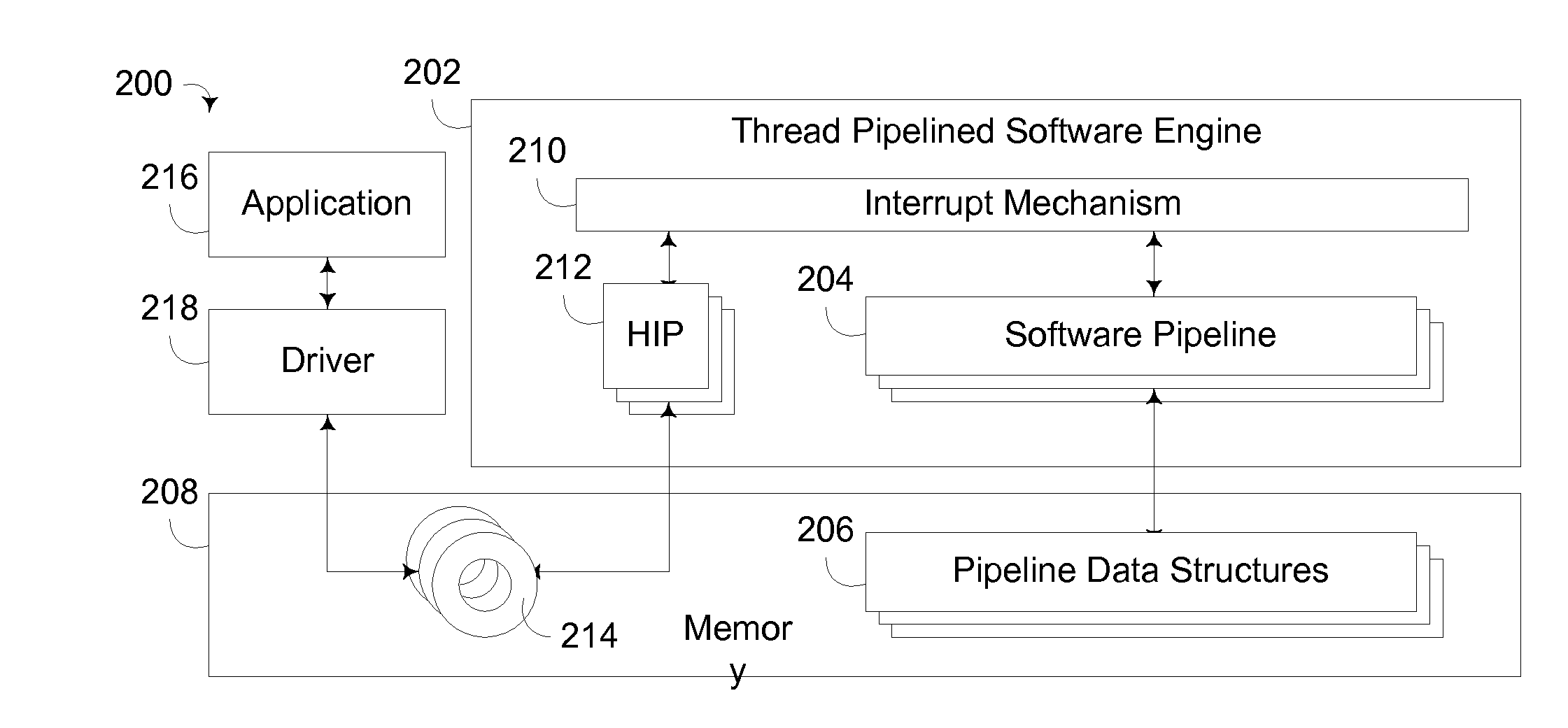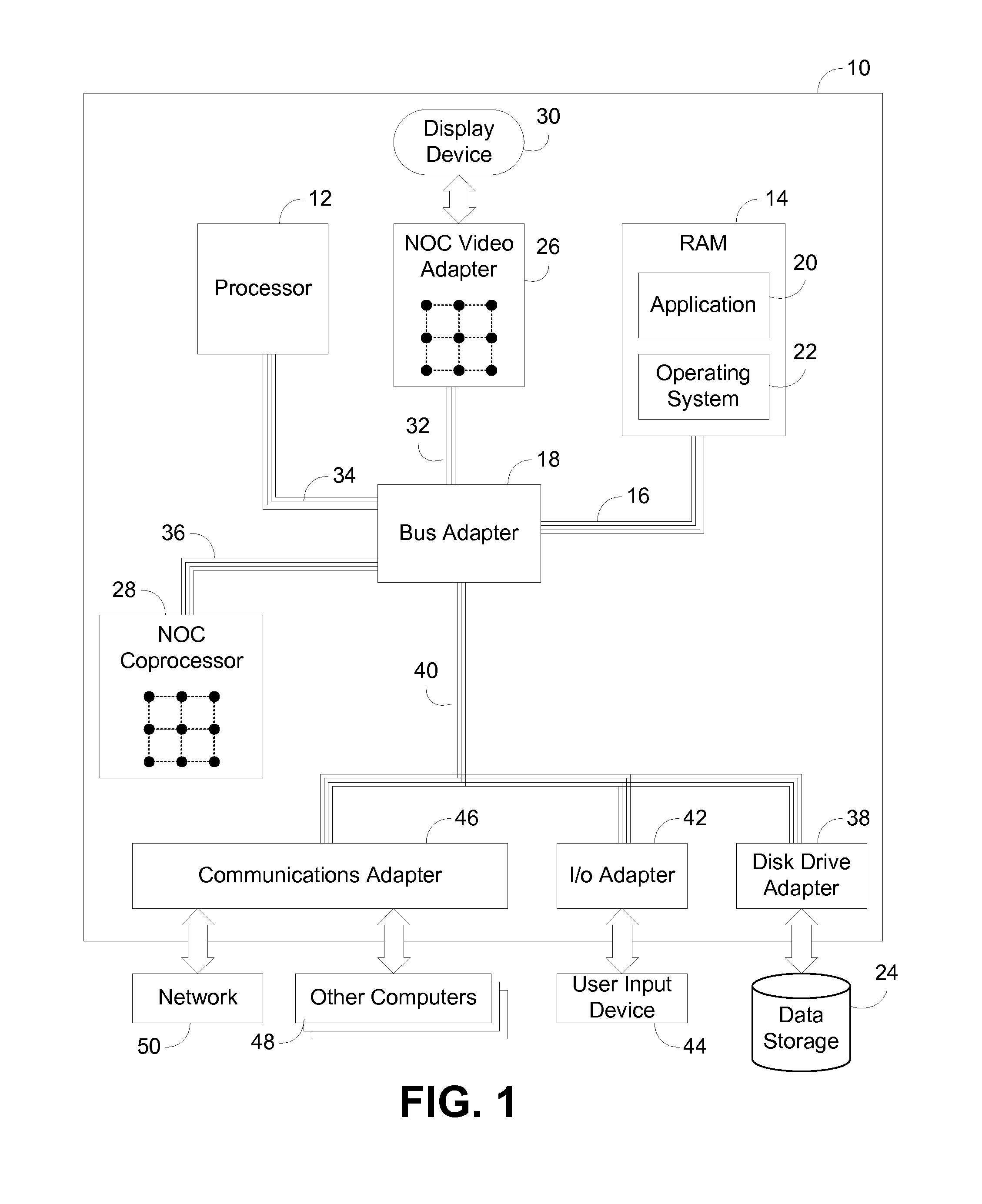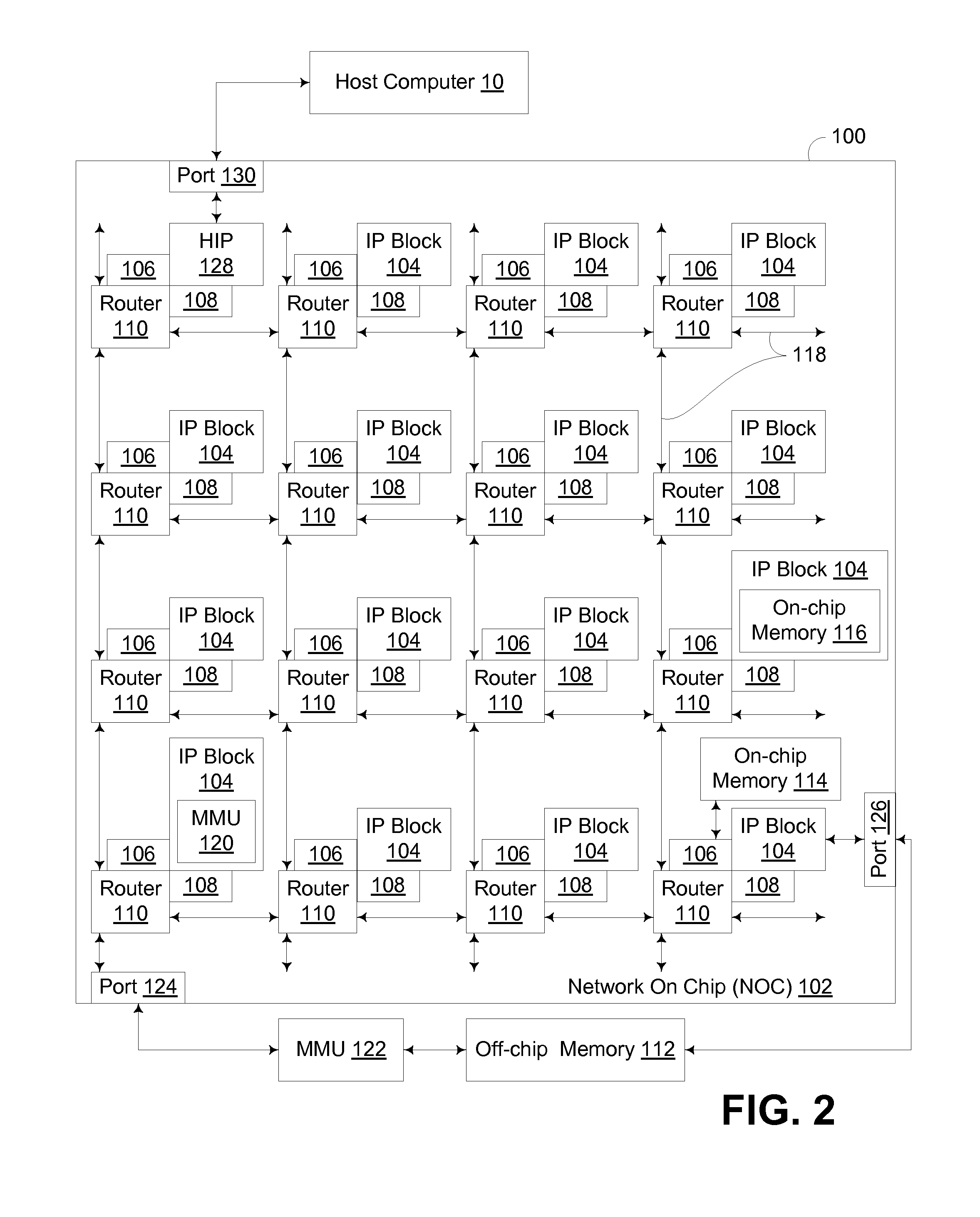Rendering of stereoscopic images with multithreaded rendering software pipeline
a multi-threading, stereoscopic technology, applied in the field of data processing, can solve the problems of low computational power, rasterization suffers from several drawbacks, and modern monitors display images, and achieve the effect of lessening the burden and overhead on a higher level api
- Summary
- Abstract
- Description
- Claims
- Application Information
AI Technical Summary
Benefits of technology
Problems solved by technology
Method used
Image
Examples
Embodiment Construction
[0038]Embodiments consistent with the invention render stereoscopic images in a multithreaded rendering software pipeline using first and second rendering channels respectively configured to render left and right views for the stereoscopic image. Separate transformations are applied to received vertex data to generate transformed vertex data for use by each of the first and second rendering channels in rendering the left and right views for the stereoscopic image. Often, the same vertex data for a scene can be transformed via the separate transforms in a concurrent manner to enable concurrent rendering of the vertex data into left and right views of a stereoscopic image from the same set of vertex data for a scene, thereby lessening the burden and overhead on a higher level API and / or application.
[0039]A scene, within the context of the invention, refers to the “world” or multidimensional space within which objects are placed prior to rendering of an image frame. Typically, a scene ...
PUM
 Login to View More
Login to View More Abstract
Description
Claims
Application Information
 Login to View More
Login to View More - R&D
- Intellectual Property
- Life Sciences
- Materials
- Tech Scout
- Unparalleled Data Quality
- Higher Quality Content
- 60% Fewer Hallucinations
Browse by: Latest US Patents, China's latest patents, Technical Efficacy Thesaurus, Application Domain, Technology Topic, Popular Technical Reports.
© 2025 PatSnap. All rights reserved.Legal|Privacy policy|Modern Slavery Act Transparency Statement|Sitemap|About US| Contact US: help@patsnap.com



